By now, most of the Strategic Partnerships in the Dialogue and Dissent programme have published their first data sets in the IATI Standard. This is the start of mandatory publishing of data to replace written progress reports, and, as the Partnership programmes are also just starting up, allows everyone to first focus on traceability. The IATI Guidelines of the Dutch Ministry of Foreign Affairs provide details and examples on how to create proper links between activities of your organisation and those of others.
Lets take, as an illustration, the data of the Health Systems Advocacy Partnership (HSA), a programme led by Amref Flying Doctors, with Wemos, Health Action International and Achest as partners.
From the perspective of the Ministry (and of the Dutch Parliament and tax payers), the information available in their data looks like this:
We can see that the Ministry is running a programme where Amref is an implementing partner. And that’s it. You can click on the image to open it in a separate tab, and click on the activity in the Ministry, to open a page with details about it in d-portal.
Within the HSA, partners agreed each organisation would use a similar structure, using an overall programme activity and underlying project activities for implementation. Schematically:
The partners each worked with AidStream to produce their data, following the guidelines of the Ministry. So does the data reflect this structure?
Not quite yet: a first analysis by the Data4Development team revealed some easy to fix ‘bugs’: it all boils down to being very careful with the identifiers used for organisations and activities.
- It is easy to “only” use an internal project number (e.g. “4100” for the overall programme in the system of Amref), but it is important to use the full IATI identifier: this would be NL-KVK-41150298-4100 for that same programme).
- Likewise, it is easy to enter either a name or an activity identifier when you actually should use an organisation identifier. If you don’t have an organisation identifier, the name is crucial: any difference in writing technically makes it a separate organisation.
Once these issues (and a few other minor ones) are fixed, we can see a much expanded version of the data from the perspective of the tax payer:
A proper structural view also makes it possible to view funding flows. For instance, each organisation publishes their ‘commitments’: the activities or organisations financed from a programme or project. A rough draft of flows between the activities looks like this (using only transactions with activity identifiers):
Once the links are properly in place, you’re able to check the information you publish: are the disbursements published by one organisation consistent with the incoming funds published by another?
The next step will be to dive deeper into your own data, to look at locations, sectors you work in, countries or regions where you work, and, in the next iteration, results you want to achieve.
On Wednesday July 6th, Maarten Kuijpers of Amref will share experiences and developments in the HSA partnership at the IATI Learning Workshop at the New World Campus. Join us there, get your ticket here!

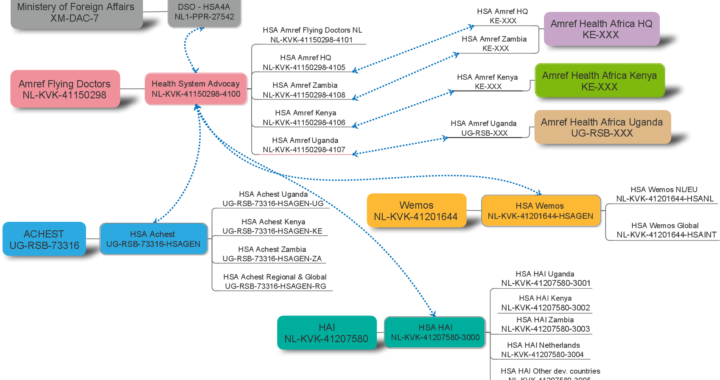
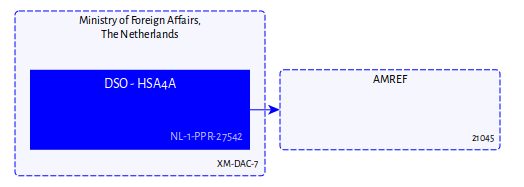
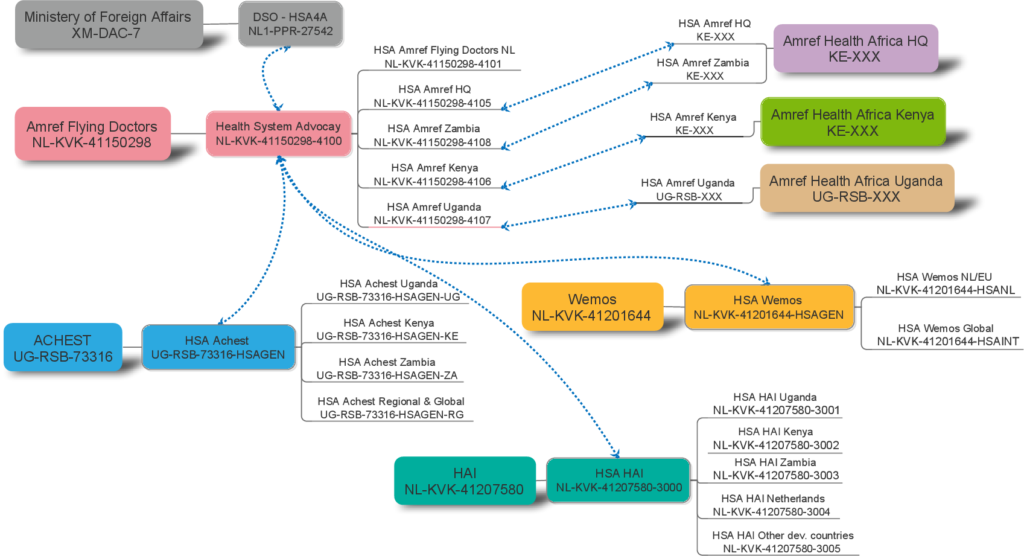
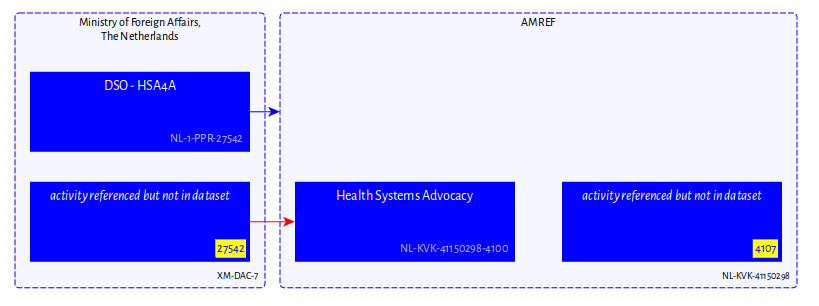
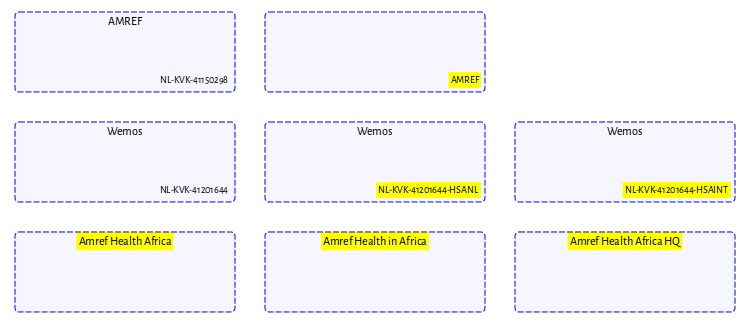
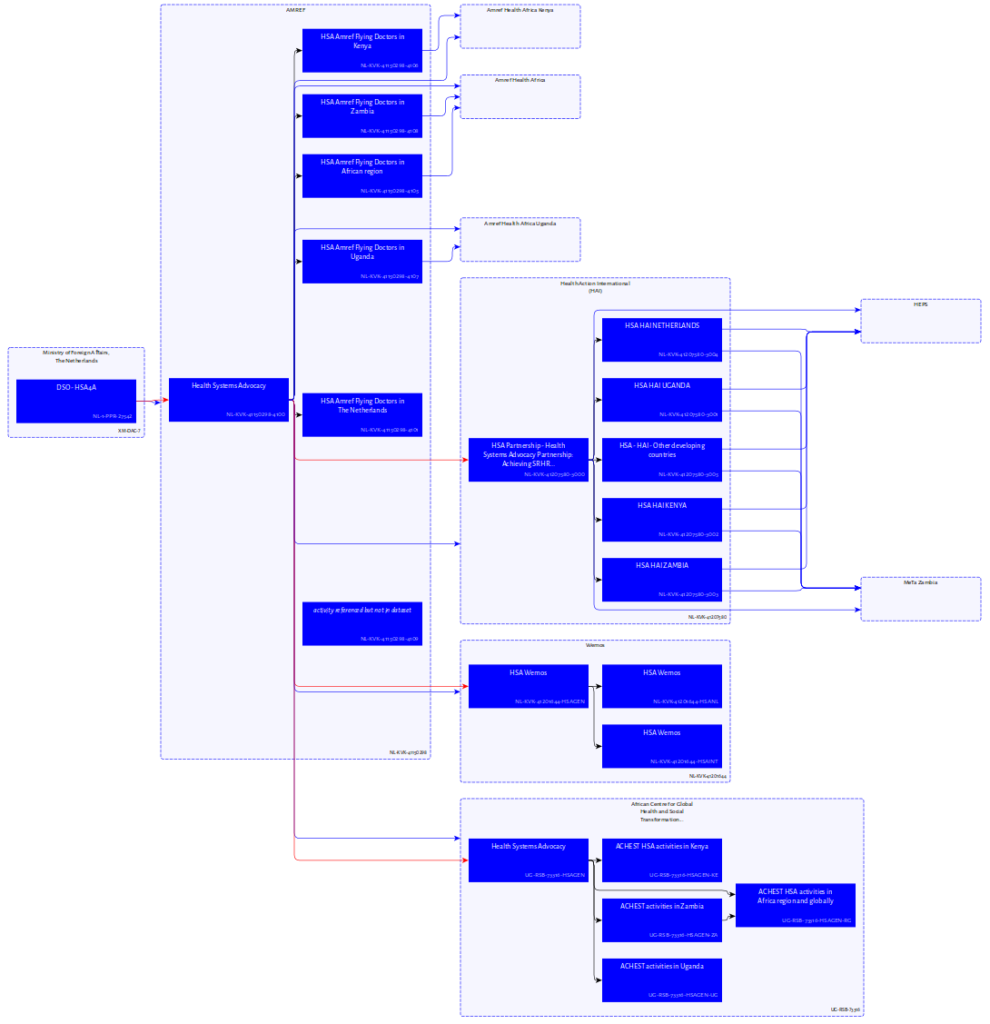
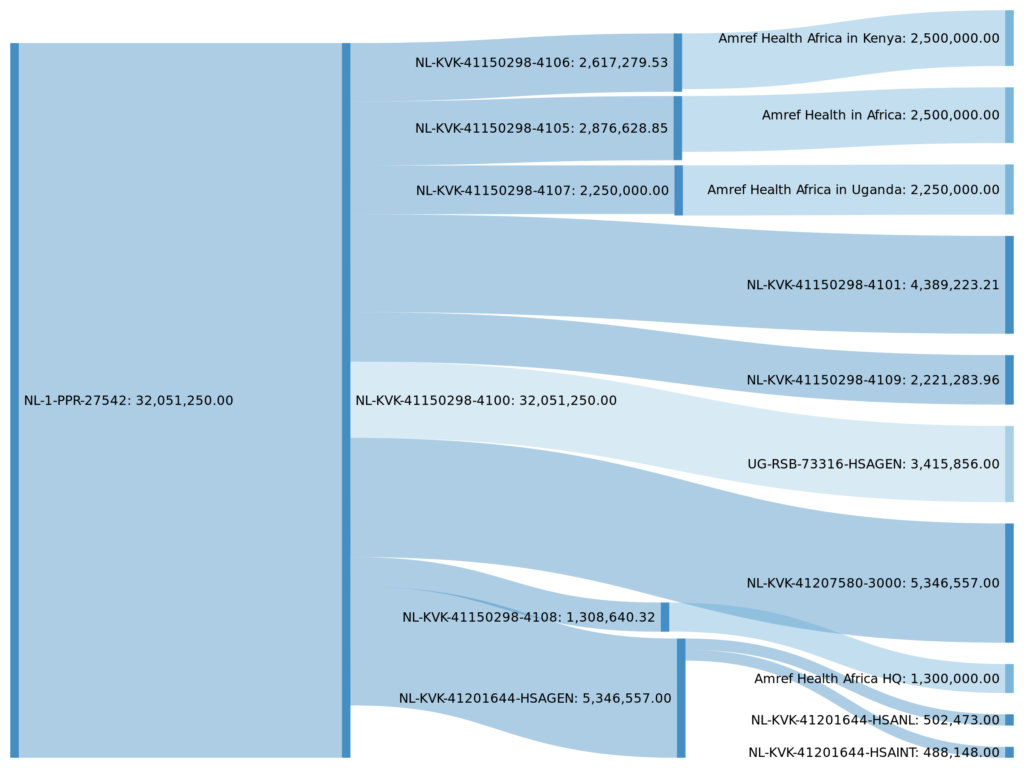
RT @rolfkleef: First feedback on consortium #opendata: #IATI Traceability in the Health Systems Advocacy Partnership https://t.co/wPAL0pGDKf
@rolfkleef I’d be interested to see how we could do some of this mapping work for @dfid_uk partners. https://t.co/zQvWC1meg4